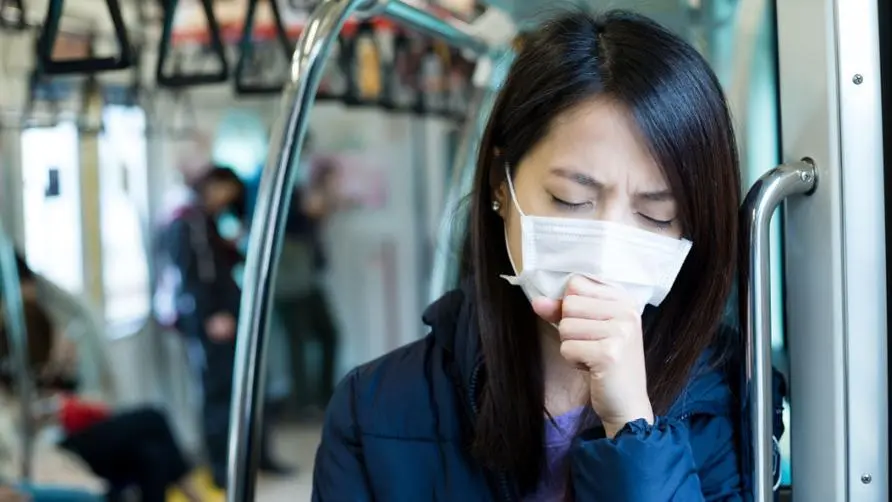COVID-19 and Mycoplasma impact the health of furry children! Do not use "chloroxylenol" for household cleaning: it may seriously damage the cat's liver and kidneys

Be careful when cleaning your home to create a healthy and non-toxic environment for cat owners
In recent years, due to the outbreak of the COVID-19 epidemic, the use of cleaning and disinfection products has increased sharply around the world. However, it is difficult to wait until the COVID-19 epidemic subsides slightly. Recently, the threat of pneumonia caused by “mycoplasma” has increased, which has also increased the demand for household cleaning and disinfection products. It has gained attention again, and choosing household cleaning and disinfection products with high safety has become an important issue to protect your family and furry children at home.
The number of furry children is increasing every year, and it has become an important factor to consider when it comes to the health of the home environment!
In recent years, furry children have become an indispensable part of many families. Not long ago, the Taiwan Council of Agriculture released the latest data: According to statistical research results in 2022, the number of registered cats and dogs in Taiwan has reached 2.2 million, which has exceeded the total population of children under 15 years old. In addition, in recent years, the mainstream fur children in most counties and cities are mainly cat owners. Considering the various activities of cat owners at home, such as sleeping and patrolling, The health of the cat owner must also be taken into consideration when choosing various items in the home, including territory, eating, and the frequent need to “groom” and lick the little fleshy paws.
PCMX, an ingredient in cleaning and disinfecting products, poses a serious threat to cat owners’ home environment
There are a wide variety of cleaning and disinfecting products for furry pets on the market. It is important to avoid ingredients that can harm furry pets. Common cleaning product ingredients include bleach, ammonia, phenols and other ingredients. However, among these ingredients, the one that everyone may be least aware of is phenols, and phenols The most common form is Chloroxylenol (also known as PCMX). Many medical papers have previously pointed out that chloroxylenol (PCMX) can cause toxic effects on cats. With the accumulation of daily exposure doses, the mucous membranes and esophagus will continue to be irritated and corroded, and it will accumulate in the liver and kidneys. , leading to liver damage and renal tubular necrosis, so it has attracted much attention.
PCMX can also directly penetrate human skin. In the case of overexposure, it may indirectly cause side effects such as allergies and skin rashes. However, the impact of PCMX on cat owners is far more serious than you think.
Lacking critical enzymes, PCMX cleaning and disinfecting products are poisoning your cat owners
Although PCMX (Chloroxylenol) may cause side effects such as allergies for humans, it is a “poison” for cat owners. This is because cat owners lack the key enzyme to metabolize PCMX (Chloroxylenol) - UGT!
UGT, the full name is phenol UDP-glucuronosyltransferase (UGT). The main function of this type of enzyme is to metabolize substances containing benzene rings, phenols, etc., and chloroxylenol (PCMX) has benzene rings and phenols. chemical molecules. The human body has this enzyme. PCMX can be metabolized by the human body at low concentrations and is not likely to cause toxicity. However, studies have pointed out that cat owners lack UGT enzymes, including UGT1A6, UGT1A9, etc. This also means that when cat owners are exposed to PCMX in the environment, through daily actions such as “grooming” and licking the small fleshy paws, all If you are careful, you will ingest PCMX, and it will continue to accumulate in the cat’s body and “cannot be metabolized”. If this toxic substance accumulates in the body, it will increase the risk of cancer for cat owners and pose a serious threat to their health!
Appeal to professional cat owners: When choosing environmental cleaning and disinfection products, be sure to read clearly “PCMX (Chloroxylenol)-free”
In order to allow cat owners to enjoy a healthy and non-toxic environment at home, it is recommended that cat owners carefully check the ingredient list of the cleaning agent when choosing home environment cleaning and disinfection products, and do not contain chloroxylenol PCMX (Chloroxylenol)! Today’s biotechnology is advanced. In addition to PCMX environmental disinfection and cleaning ingredients, there are other environmental cleaning ingredients that are effective in inhibiting environmental pathogenic bacteria and are non-toxic to cat owners, such as: chlorhexidine gluconate, cetrimide, etc., which are better. At a time when mycoplasma is in danger, let us choose the right cleaning products together to safeguard the happiness and health of ourselves and cat owners!
References:
Chan TY, Sung JJ, Critchley JA. Chemical gastro-oesophagitis, upper gastrointestinal haemorrhage and gastroscopic findings following Dettol poisoning. Hum Exp Toxicol. 1995 Jan;14(1):18-9. doi: 10.1177/096032719501400104. PMID: 7748610.
Court MH. Feline drug metabolism and disposition: pharmacokinetic evidence for species differences and molecular mechanisms. Vet Clin North Am Small Anim Pract. 2013 Sep;43(5):1039-54. doi: 10.1016/j.cvsm.2013.05.002. PMID: 23890237; PMCID: PMC3811070.





